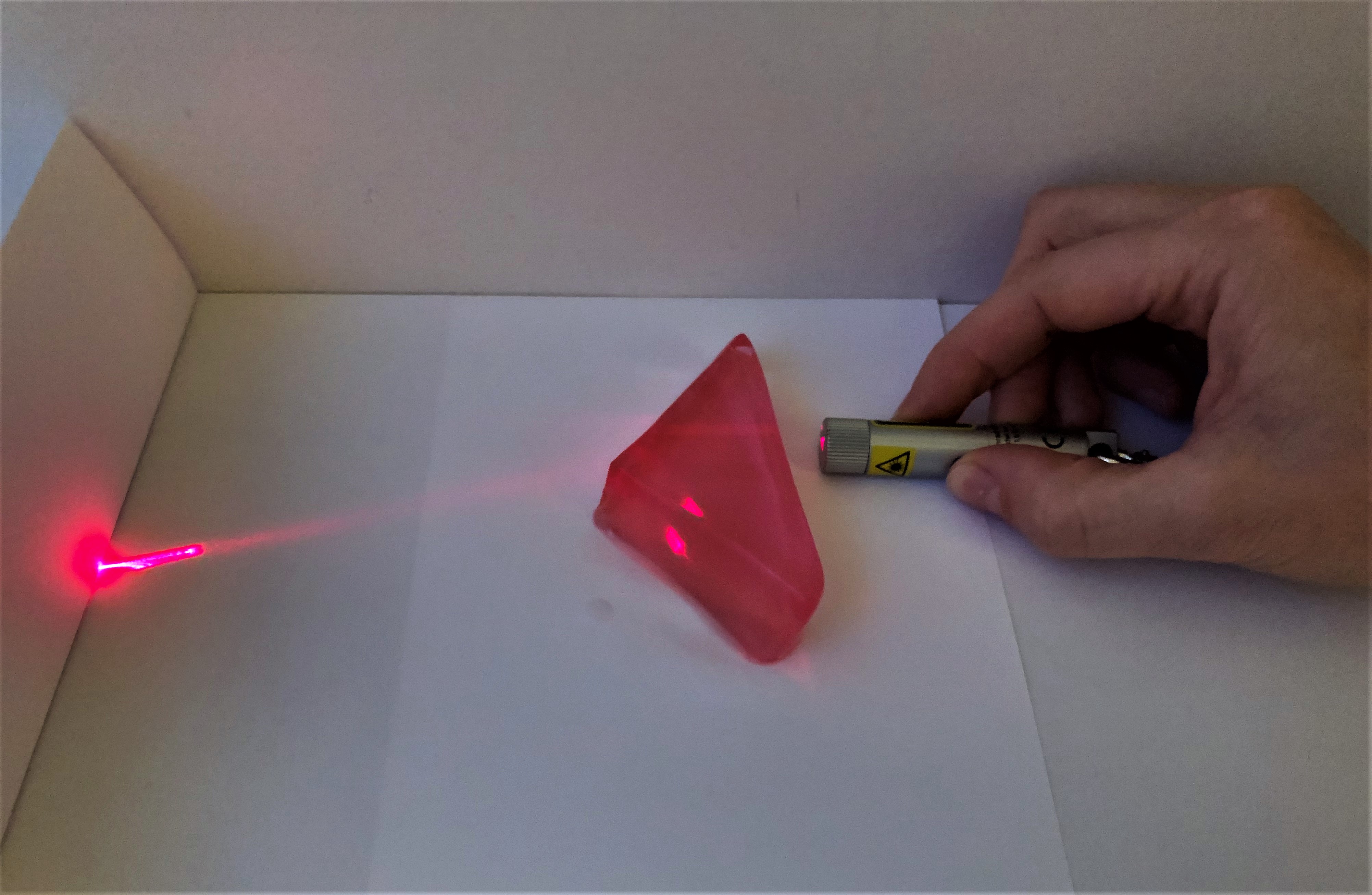Dark Matter jelly lenses
Dark Matter Jelly Lenses
Dark matter is one of the most intriguing scientific mysteries of our time and offers exciting instructional opportunities for physics education in high schools. Here, we present a fun new approach to teach about dark matter using jelly lenses as an instructional analogy of gravitational lenses.
This activity is described in detail in the open-access article Woithe, J., & Kersting, M. (2021). Bend it like dark matter! Physics Education, 56(3), 035011, which also includes a brief overview of the history of dark matter to contextualise our presentation and a discussion of the instructional potential as well as limitations of the jelly lens analogy. Below, we include the material list and instructions.
Hands-on experimentation with jelly lenses
Material:- A laser pointer that is safe to use.
- Food colouring in the colour of your laser pointer (e.g., red for red laser pointers)
- 10 g gelatin
- 500 ml water
- 50 g sugar (or sweetener)
- Optional: flavour
- A small pot and a heater
- Plastic or glass boxes, ideally in different shapes
- A knife
- Hot water
- A surface you can clean easily such as a cutting board
- A sheet of white paper
A special fluorescent feature
To add a twist to your jelly lenses, get a UV lamp and use tonic water instead of water in the recipe. In this way, the jelly will get a unique taste, and under UV light, the jelly will fluoresce faintly in blue because of the quinine content of tonic water. We use this as a Halloween feature on dark matter day to point out the difference between the electromagnetically interacting jelly lens and dark matter lenses.
Safety instructions:
- Students should only use it under adult supervision and never direct it into someone’s eye.
Instructions:
Here, we include our preferred jelly lens recipe and provide tips and tricks that we collected along the way. You can also watch a tutorial of the lens-making process and a short demonstration on YouTube
- First, check the instructions on your gelatin but then use at least twice the amount of gelatin that is recommended: we use 10 g of gelatin together with half a litre of liquid. We tried producing a vegan jelly lens version using agar-agar instead of gelatin. However, this jelly does not become translucent enough for optics experiments.
- Next, add gelatin, water and sugar to a pot. Bunton (28) introduced the idea that the amount of sugar might change the refractive index of the jelly lens. However, there seems to be no easy linear relationship between the refraction index of a liquid and its density, which explains why we failed in producing different refractive indices.
- Add a few drops of food colouring to give the jelly a faint colour. Use the same colour as your laser point; this will increase the visibility of the laser beam. However, don’t add too much colour; this could limit the penetration depth of your laser beam.
- If you want, you can add any kind of translucent flavours such as lemon juice or raspberry flavour. Yum!
- Gently heat the mixture and stir it until the gelatin and sugar are dissolved. There is no need to wait for the gelatin to soak up liquid as recommended in many recipes.
- Fill the jelly mix into plastic or glass containers and let the jelly solidify in a fridge for a few hours, ideally overnight. Make sure that the height of the jelly in the respective container is about 2 to 3 cm. Higher lenses will suffer from poor stability; lenses with a lower height might break easily. • Once the jelly is solid enough, prepare a clean workspace, especially if you plan to eat the jelly after the experiment. Cooking spray or any type of oil can prevent the jelly from sticking to your surface, but it significantly affects its taste.
- To release the jelly from the different containers, put them into a bath of hot water for a few seconds. Also, put your knife into the hot water; this will make it easier to cut out jelly shapes.
- Cut out triangular jelly shapes using the knife. The shapes should represent isosceles triangles with an edge length of 5 to 10 cm.
- Fold a sheet of white paper twice lengthwise to serve as a screen.
- Place the triangular shape on a cutting board or similar, the two equal sides facing the screen, the other side facing the laser pointer.
- Finally, switch on your laser pointer and dim the lights to improve the visibility of the laser beam passing the jelly (Figure 3).
- Students should only use it under adult supervision and never direct it into someone’s eye.
Suggestions for educators
For more information about how to use this activity in your classroom and which students' conceptions you should be aware of, please read our open-access article Woithe, J., & Kersting, M. (2021). Bend it like dark matter! Physics Education, 56(3), 035011
